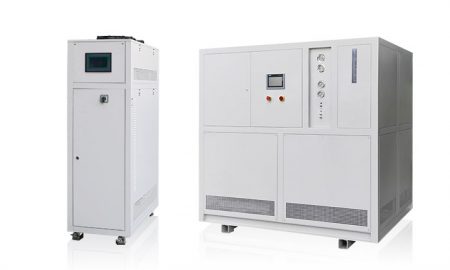Reasons and Solutions for the Chiller Unable to Reach the Set Temperature
1. The performance of the chiller is poor
If your chiller isn’t keeping the temperature, it’s probably just because the unit isn’t delivering the power output needed to maintain the temperature you set. If the heat load exceeds what the chiller can dissipate, then it will not be able to maintain the temperature. If that’s the problem, buying a quality chiller may be your best bet.
Another consideration is increased ambient heat. When coolant flows through the pipes, the system may add additional heat load, which can be addressed by insulation.
2. The temperature setting is too low

Before purchasing new equipment, users should consider whether the set temperature of your machine is too low to withstand. As with all chillers, the cooling capacity of the machine decreases as the temperature decreases. The manufacturer of the chiller will tell you the cooling capacity at a specific temperature, usually 5 ~ 35°C.
When your set point is below that temperature, your expected cooling capacity will drop. So, to get higher cooling capacity, you need to increase the set point temperature.
3. No maintenance for a long time
Like any other piece of equipment, chillers need to be well maintained to ensure they keep running efficiently.
Not having any maintenance can cause all kinds of problems with the device. With air-cooled condensers, the buildup of dust and debris on the fins and fan blades can obstruct airflow, reducing cooling capacity. For water-cooled condensers, heat transfer can be reduced due to scaling, biological growth or corrosion.
Some of the regular maintenance that the user needs to do (depending on the type of equipment) may include cleaning the condenser fins, flushing the coolant, and using corrosion inhibitors.
4. The thermal conductivity of thermal fluid is low
The cooling capacity of chillers is usually based on the use of water or ethanol as the heat transfer fluid. Water is ideal because of its high heat capacity and thermal conductivity, but it can cause corrosion. Ethanol is a good refrigerant because it remains fluid at low temperatures, but it is also highly flammable. In many cases, the fluid of choice will be a mixture of water and ethylene or propylene glycol, which provide freeze and corrosion protection as well as germicidal properties.
The thermal conductivity of these solutions is not as high as that of water, and as the glycol content increases, you will see a decrease in thermal performance. In order to use a glycol solution with minimal impact on the efficiency of the chiller, it is recommended to keep the glycol level as low as possible. 30% ethylene glycol will provide the required protection and result in about a 3% decrease in thermal performance.
5. High ambient air or facility water temperature
Depending on whether it is air-cooled or water-cooled, the chiller needs to transfer heat to the ambient air or facility water. When these temperatures are higher, the heat transfer efficiency is lower. This results in higher condensing pressures and reduced overall system performance. A cooler ambient air or facility water temperature can increase the efficiency of the chiller and help it maintain its temperature.
私たちは、最高級のオンタイムデリバリーをお約束 温度制御機器プロンプトが表示さに裏打ちされ、慎重アフターサービス。 ご相談ください 詳細はこちら!
温度制御範囲:-150℃~+50
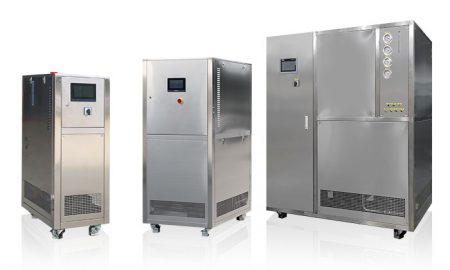
温度制御範囲:-120°C~+350°C
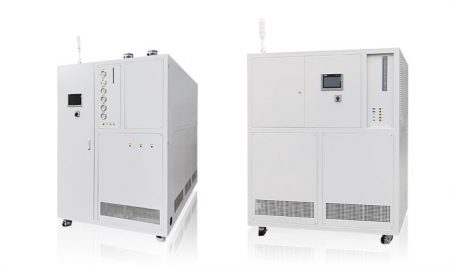
温度制御範囲:-40℃~+100
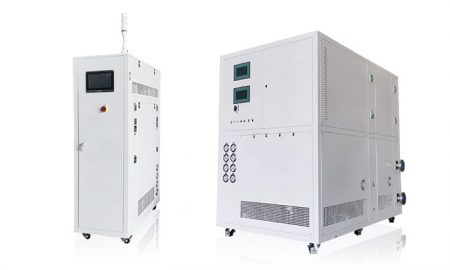
温度制御範囲:-85℃~+250
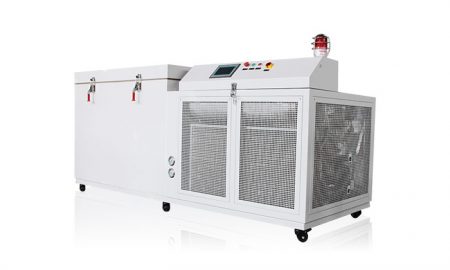
温度制御範囲:-150℃~-10
 LNEYA
LNEYA
 简体中文
简体中文











































































